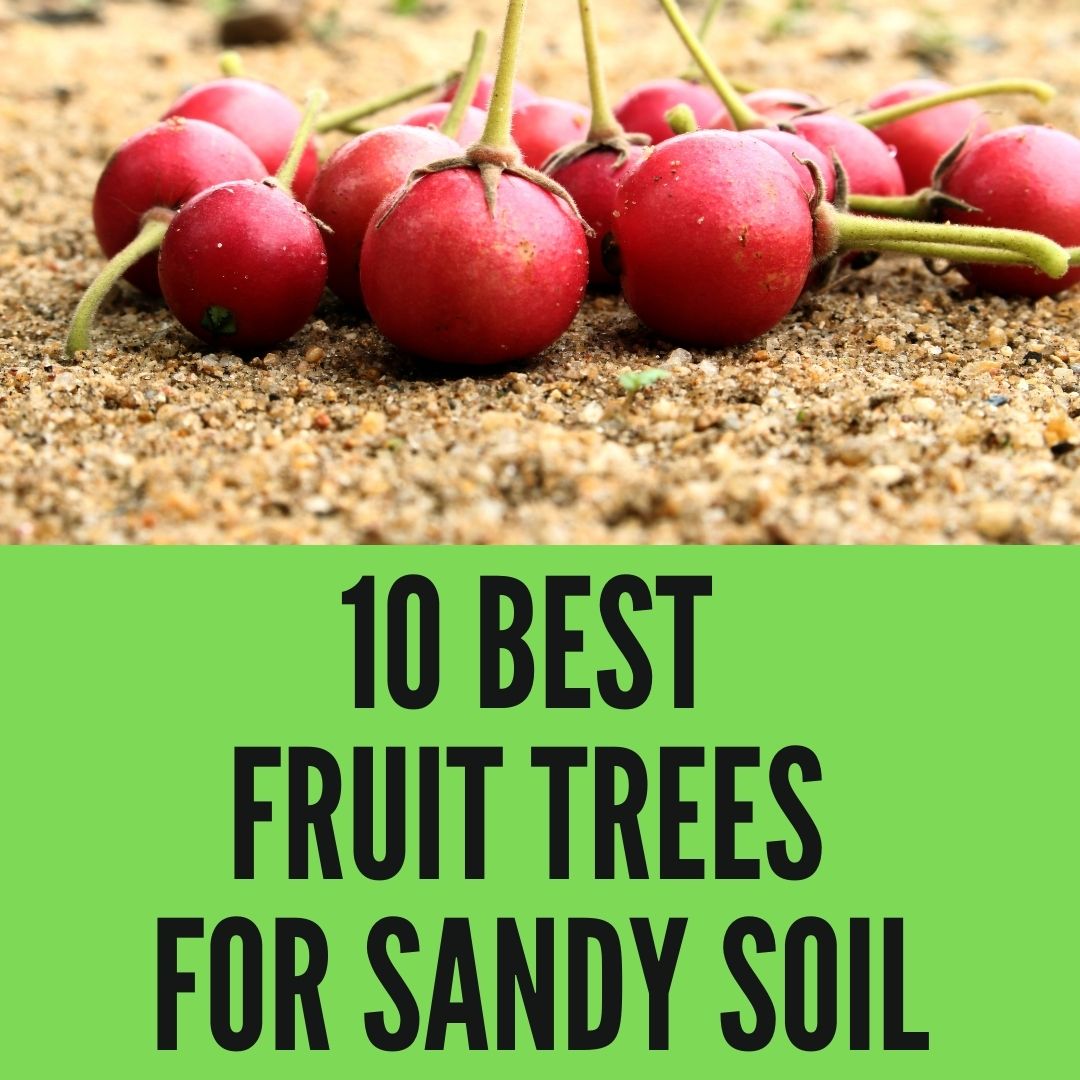If you live in an area with lots of sandy soil, you’ll need to evaluate your options before you jump into amending your sandy soil with organic matter to get ready for gardening. Once you learn about these 35 plants that thrive in sandy soil, you might decide to keep your well-draining soil and plan your garden around these picks instead.
Often, gardeners who have sandy soil will go to great lengths to amend their garden beds with organic material to try to create a more sustainable habitat for a wider variety of plants.
Many gardeners who live in sandy soil are always looking for ways to improve the quality of their soil. One way they do this is by adding organic matter to make it more fertile and viable for growing plants. However, there are many species of fruit trees that will grow best in a sandy environment, so you might want to consider planting these types of trees before you add any amendments. Read on to learn about the 10 best fruit trees for sandy soil.
Best Fruit Trees for Sandy Soil
1. Jujube
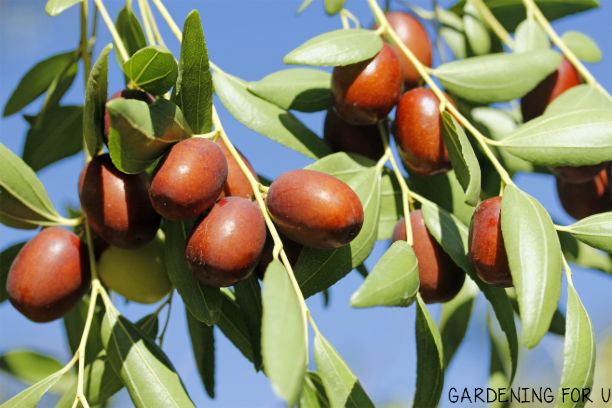
Jujube is a type of fruit tree best known for its sweet taste. The trees can grow to be about 15-20 feet tall and have oval-shaped leaves with purple flowers that bloom in the fall. Because it’s so hardy, jujubes are great plants for those who live near-desert areas or on sandy soil.
This plant will need full sun exposure as well as moderate water levels when planted outdoors (or watering once every two weeks).
If you want to keep your garden healthy though, this plant should not be grown indoors because they are both messy and prone to crawling insects without proper care.
2. Dragon Fruit
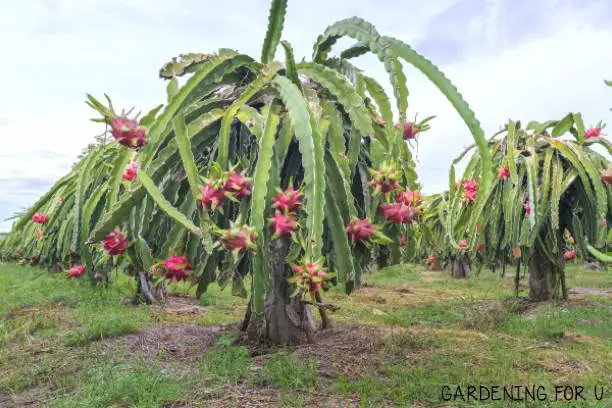
Dragonfruit is a fruit that was originally found in Vietnam and Southeast Asia. Be wary though, because even if you protect your plants from frost, they will still only grow well with plenty of sun exposure! And be sure not to overwater them after planting as too much moisture will lower their chances of survival.
Dragonfruit goes great on salads or with some salad dressing, chopped up for cereal bowls, and extra-thin slices put over ice cream! You can also freeze it for future use.
Dragonfruit is best known for its vibrant colors that are typically orange and pink. One of the best trees to grow in sandy soil, dragon fruit can be a little tricky to take care of because they need full sun exposure.
The plant will also require moderate watering levels when planted outdoors (or watering once every two weeks) as well as protection from frost or cold weather conditions. It’s best if you add a bit of organic material into your garden bed before planting these trees so it doesn’t become compacted over time or overly dry out during periods without rain.
3. Pomegranate
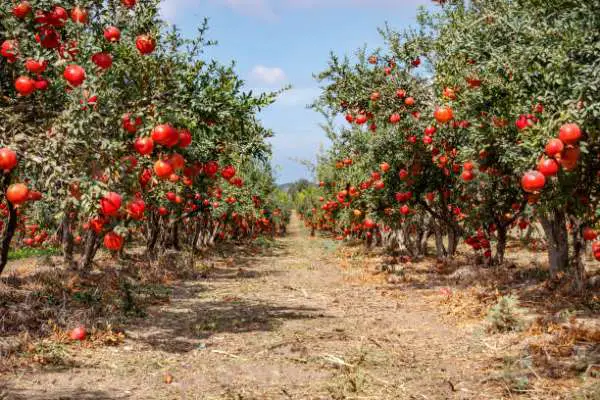
Pomegranate trees are a tantalizing mixture of sweet color and tart flavor, but what you might not know is that they can be tricky to take care of. The pomegranate tree demands full sun exposure like any other fruit-bearing plant, but it cannot tolerate frost or hot winds which means you need a yard with plenty of tolerance for seclusion.
From the sandy soil where this native Mediterranean fruit grows best to the nutrient-rich fertilizer―even as far as its decorative red foliage when in bloom―the pomegranate is more than worth the work.
Pomegranates are known for their sweet color and tart flavor. They’re grown on an evergreen shrub or small tree, which needs full sun exposure and sandy soil. Keep it watered well so that the fruit will grow properly.
The bristles on the awns protect the flower from insects while they develop into something sweeter than sugar!
4. Grapes

Grapes need plenty of water and fertile soil to thrive best. It’s best grown in a sunny area with well-drained, loamy soil so that it can grow up tall on its vines. This is an old fruit tree cultivar from the Mediterranean region where grapes were first cultivated as early as 5000 BC! Grapes are known for their sweet flavor when eaten fresh or they’re made into wine.
Dwarf varieties are best if you live in an urban environment but even these will require some sort of support system (such as trellises). The most popular types are green grapevines such as Thompson seedless, red grapevines like Cabernet Sauvignon, and white grapevine.
5. Kei Apple

Best fruit trees for sandy soil: Kei apple is best if you live in an urban environment and have limited space. Although it’s a slow grower, this tree has the best flavor of all apples! The small size makes it ideal to plant on balconies or patios as well.
Sour cherries are best known for their delicious taste when eaten fresh but they can also be canned or made into preserves, pies, and other yummy desserts. Sour cherry trees need plenty of room because they’re very long-lived (upwards of 150 years!).
But that’s not too bad considering these trees will start producing sour cherries after about 20 years with regular care such as pruning and fertilizing them every few seasons.
6. Oriental Persimmon
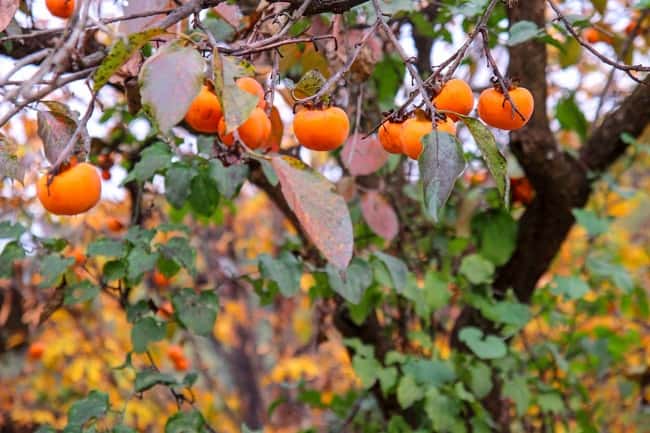
Place these lovely and delicious trees in your garden this year! They’re easy to grow, large-fruited, and offer year-round interest. The fruit is borne on a large shrub or small tree of the genus Diospyros with glossy leaves that typically have five leaflets, one terminal leaflet typically being much larger than the two side ones.
Many varieties are edible while others are usually used for ornamentation or as rootstock only because they produce no kernels. Planting more than one variety is recommended but not required for fruit sets. Varieties include Fuyu, Jiro, Hanagosho among others which are winter hardy in eastern North Carolina and southern piedmont areas.
Oriental persimmons thrive in eastern North Carolina and the Piedmont area but do not tolerate cold. Beautiful, delicious, and easy to grow, oriental persimmons are recommended over cultivars such as Fuyu, Jiro, or Hanagosho.
Plant more than one variety for fruit set. The trees prefer loamy soil with a ph of 6-6.5 but grow well on a wide range of soils. Greek lore says that eating 10 Fuyu per month will ward off illness; six Jiro can be eaten daily to prevent skin wrinkles; three Hanagoshos provide instant energy boost!
There’s a lot to love about our Oriental Persimmons! From their deliciousness to the beauty you can create with them in your garden, we’ve got you covered. These beauties are perfect for anyone who wants something different to add to your garden and enjoy year-round – from their amazing fall colors all the way through to April when they set blossoms that produce fruit in the summer.
Add these beautiful trees in alongside other hearty plants like magnolia or crabapple trees for some extra color during blossom season and later on as they grow vibrant reds, oranges, and yellows until late November/early December!
7. Fig
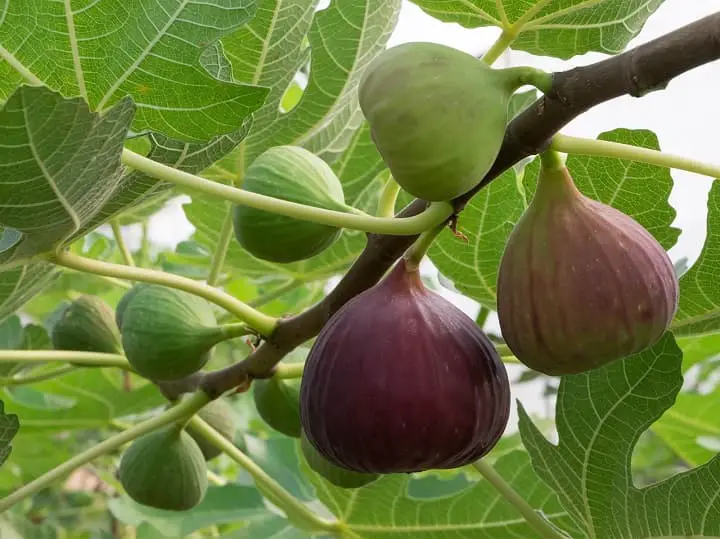
Figs are a unique fruit that is often described as, “The fruit of love.” Figs have both sweet and deep flavors, with an extremely satisfying crunchiness! These botanical appetizers can be enjoyed wherever you go. Figs are heralded for their potential health benefits including promoting healthy digestion, decreasing your risk of heart disease, and helping manage blood sugar levels.
The fig has an edible purple or green peel and pink flesh. It is about the size of your thumb, with little seeds inside. The scientific name for the fig is Ficus carica.
Figs offer a variety of health benefits — and as you may have guessed, they are one of nature’s more nutritious fruits! They provide vitamins A1., B2, C, calcium (vitamin D if skin-to-sun) in high amounts.
And because they also help with digestion and blood sugar control, it’s no wonder these masters of fruit boast other healthy bonuses like stress reduction and increased immunity! Add some to breakfast cereal or enjoy them raw any time during the day – these small but mighty treats will amp up your sense.
Figs are perfect for any occasion, but we especially love partnering them with their leafy counterparts to create wonderfully unique dishes. Add figs in pesto or tossed on top of pasta salad for an elegant and delectable flavor – sans the calories!
8. Natal Plum
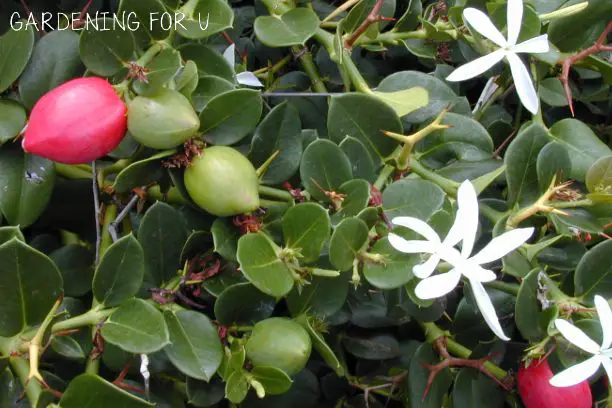
Natal plum trees are best suited for zones that get hot and dry summers. They do well in most soil types but will grow best where the soil has a pH range between about six to seven. These trees have deep green leaves with purple flowers appearing in mid-spring that turn into yellow or orange edible fruit by fall.
The natal plum tree is very disease-resistant and can be grown both indoors or outdoors.
The Natal Plum Tree is best suited for Zones that get hot and dry summers since they thrive in warm weather environments.
These Trees also need healthy soils which should contain high amounts of oxygen like Nitrogen, Phosphorus, Potassium as well as Calcium because these nutrients will help the Natal Plum Tree grow best.
9. Guava
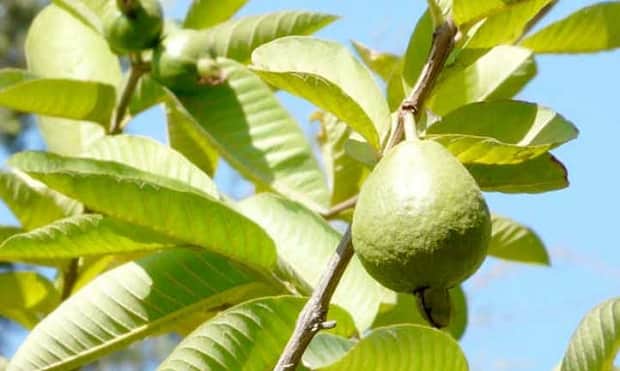
They say that guava trees originate in Central America. (It’s okay, we’ve never been any good at geography.) They are oval-shaped with light green or yellow skin and edible seeds inside of the fruit. Guavas provide awesome antioxidants, vitamin C, potassium, and fiber to our bodies when eaten—not too shabby!
What’s more, the leaves are used as an herbal tea for a variety of things like coughs and skin allergies while the extract from them is taken as supplements. And this isn’t all – there is evidence that shows these fruits have numerous health benefits!
Guava is an extremely tasty fruit, packed with antioxidants and potassium. Guavas are also one of the more nutritious tropical fruits out there. Rich in vitamin C, fiber, and many other minerals that promote good heart health.
Lime tree leaves often have a much stronger flavor than lime juice and this makes guava tea a great alternative to regular brewed tea or coffee.
They’re so rich in Vitamin C, antioxidants, potassium, and fiber that there are 8 evidence-based health benefits of this fruit—including muscle relaxation, improved immune function, reduced risk of Parkinson’s disease, diabetes prevention, and improvements to the quality of gum tissue.
And if those facts don’t tempt you…guava leaves can act as an herbal tea while also containing a leaf extract supplement with many properties!
10. Date Palms

Phoenix dactylifera, known for their edible sweet fruit, are farmed across Northern Africa, the Middle East, and Southern Asia. In regions where it is grown commercially, it has been cultivated to produce year-round crops by providing a long harvesting season.
The Phoenix date palm grows from 20ft to 25ft in height with leafy crowns of up to 1m at adult age. Adaptive nature enables this plant to withstand harsh climates that change rapidly through cycles of heavy torrential rains followed by prolonged dry spells.
Perfectly suited for balconies wishing to add tropical ambiance or indoor plantscapes needing some accent color – look no further than Phoenix date palms!
Excellent for cooking and baking, fresh dates are sugar-rich. Supports a healthy weight by regulating blood sugar levels
Added benefits: Helps with constipation, Improves sex life
Final Thoughts
If you’re looking for a tree that is easy to grow, has low maintenance, and will give your property some much-needed shade, then one of these 10 best fruit trees for sandy soil might be perfect.
Jujube has the ability to thrive in both hot and cold climates which makes them an excellent choice if you live somewhere with extreme temperatures like Texas or Florida.
Dragon Fruit is great because it can withstand high heat during the summer months as well as freezing temps during wintertime.
Pomegranates are also versatile when it comes to climate conditions; they can survive in areas where there’s snowfall at least once each year but not too often (such as New York).
Grapes do require more water than other varieties o fruit trees for sandy soil but they make up for it with easy peeling skin and high sugar content.
